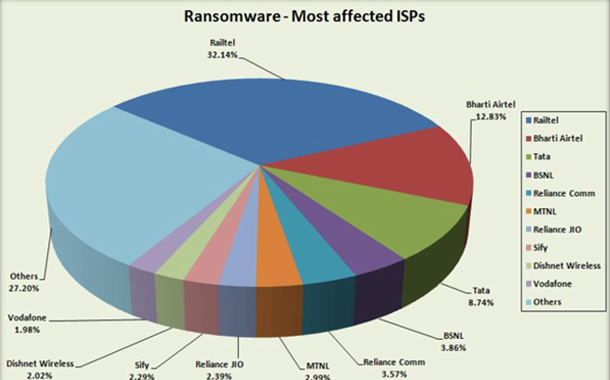The smart city dream is making everyone enthusiastic. However, this comes with security breaches and malware attacks that can have a detrimental effect on the entire nation. Public Wi-Fi networks are not very safe as they may seem. Even if they have a security password or OTP, there is sharing of data which is constantly happening via these platforms. This means your data is at risk and you may become an easy target to cybercrime.
Due to the mayhem caused by WannaCry Ransomware, we saw a surge and emergence of Ransomware as the top-most attack vectors in the threat landscape. According to the statistics made available, India was one of the top most affected countries in the world.
Moreover, based on the information collected from our telemetry servers, we observe that the most infected state within India was Madhya Pradesh with 32.63%, followed by Maharashtra at 18.84% with Delhi coming in at number three position with 8.76%.
There are numerous ISPs operating within India, and Google’s Railwire, the free Wi-Fi service launched by Railtel, is one of them. It was observed to be the top-most network where WannaCry and other Ransomware have been detected within India is the RailTel with 32.14% of the entire share.
Based on the figures, we can gauge the popularity of this Free Wi-Fi Service and also the density of population which can get affected. We have every reason to believe that majority of the Ransomware attacks which happened during the last week, within India, would have been averted had Railtel implemented the stop-gap measure of blocking SMB traffic.
While the Government is installing free Wi-Fi spots at various spots all over India, there is need to validate the internal security of these networks and there is also a need to ensure that all the consumers who are using RailTel’s free Wi-Fi service should do so with some caution. Moreover caution is to be exercised whenever using any free Wi-Fi service.




